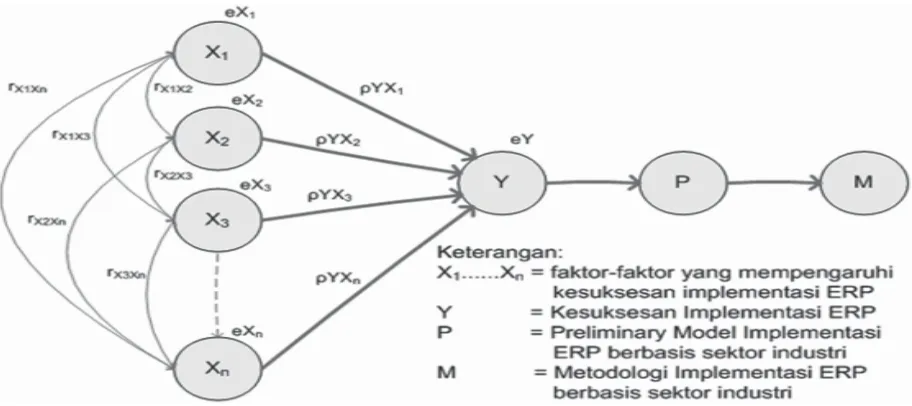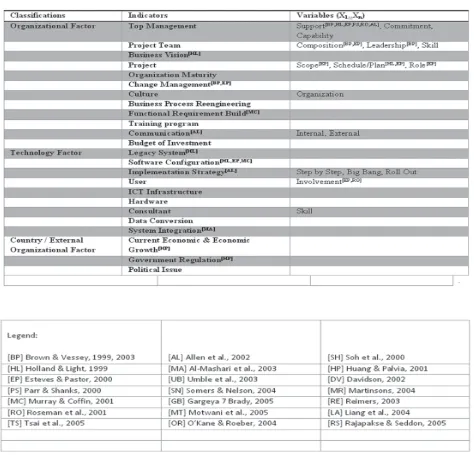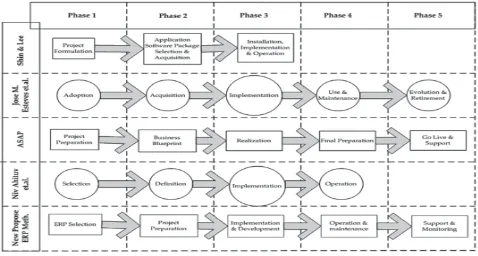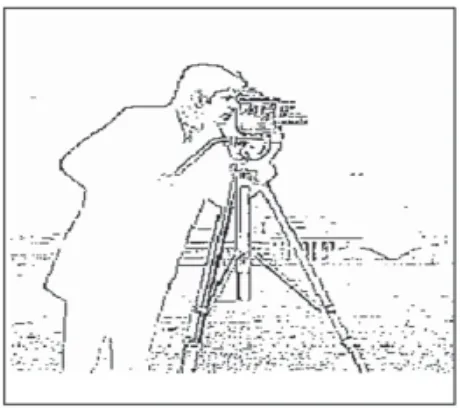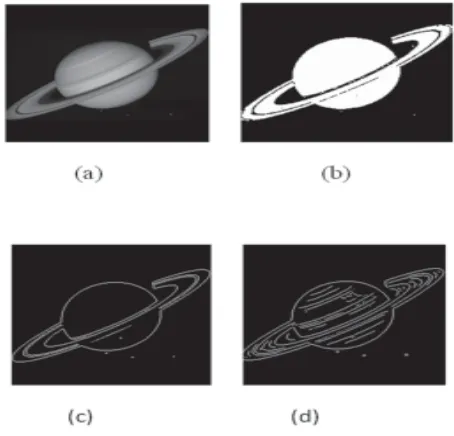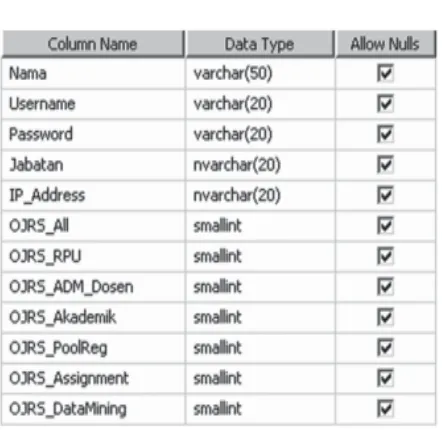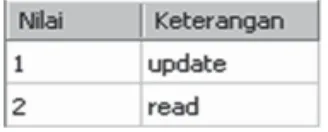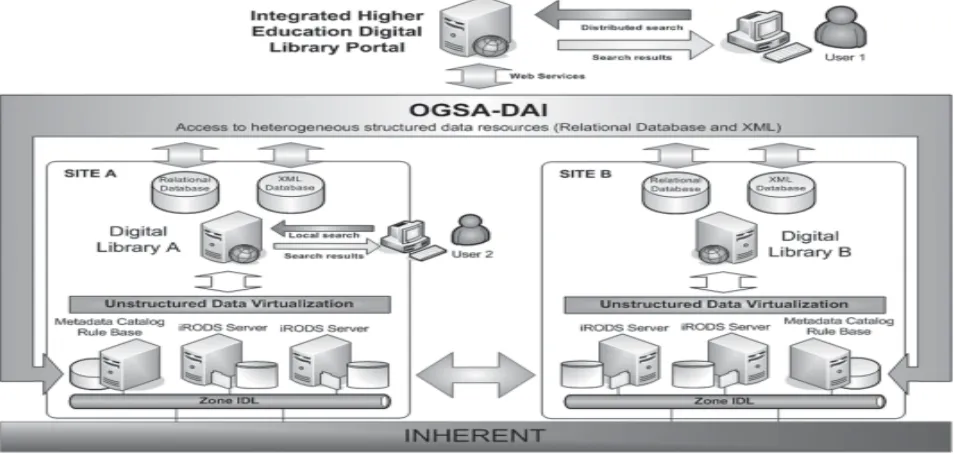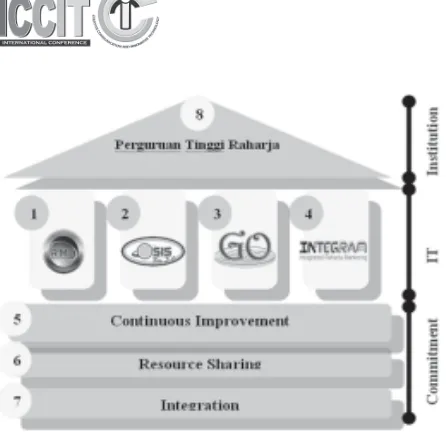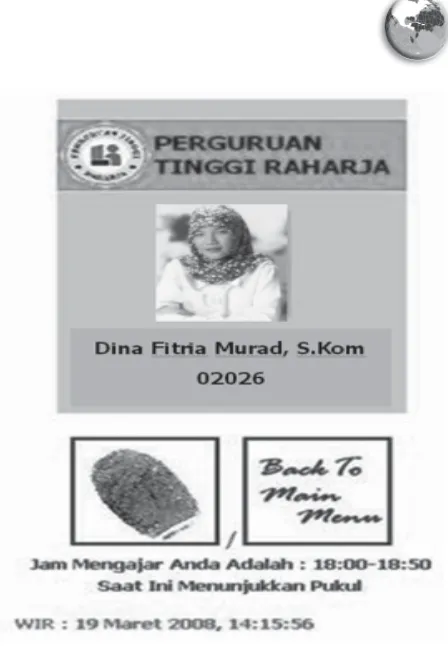ISSN: 1978 - 8282
Tangerang - Indonesia
Published by
CCIT Journal, Indonesia
The Association of Computer and Informatics Higher – Learning Instituition in Indonesia (APTIKOM) and
STMIK Raharja Tangerang Section
Personal use of this material is permitted. However, permition on reprint/republish this material for
advestising or promotional or for creating new collective work for resale or redistribution to servers or lists,
or to reuse any copyrighted component of this work in other works must be obtained form the Publisher
CD – Conference Proceedong
CCIT Catalog Number:
ISSN: 1978 – 8282
Technically Co-Sponsored by
National Council Informatioan Techonology Of Indonesia
Raharja Enrichment Centre (REC)
The Institutional of Information Communication and Technology
Digital Syinztizer Laboratory of Computers system Processing
Design and typeset by:
Steering Committee
- Message from Steering Committee
1
Programme Committee
4
- Message from Programme Committee
5
Organizing Committee
9
- Message from Organizing Committee
10
Paper Participants
13
Revievwers
17
- Panel of Reviewers
18
Keynote Speeches
19
- Richardus Eko Indrajit, Prof
20
- Rahmat Budiarto, Prof
31
Paper
32
Author Index
284
Schedule
286
Location
288
Steering Committee
Steering Committee
Steering Committee
Chairman:
R. Eko Indrajit, Prof.
(ABFI Institute, Perbanas)
Message from Steering Committee
Welcome Speech from the Chairman
The honorable ladies and gentleman, on behalf of all Programming Committee and Steering Committee, I
would like to welcome you all to the International Conference on Creative Communication and Innovative
Technology.
It is indeed a great privilege for us to have all of you here joining this international gathering that is professionally
organized by Perguruan Tinggi Rahardja. The ICCIT-09 has an ultimate objective to gather as many creative
ideas as possible in the field of information communication and technology that we believe might help the
country in boosting its economic development.
Since we are strongly confidence in the notions saying that great innovations are coming from the great
people, we have decided to invite a good number of young scholars originating from various campuses all
over the countries to join the gathering. It is our wish that the blend between new and old generations, wisdom
of legacy and the emerging modern knowledge, the proven technology and the proposed enabling solutions,
can lead to the invention of new products and services that will bring benefits to the society at large.
Message from Steering Committee
joined the committee to prepare and to launch such initiative successfully. Without your helps, it is impossible
to have the ICCIT-09 internationally commenced. Last but not least, this fantastic gathering will not come true
without the great efforts of Perguruan Tinggi Rahardja. From the deepest down of my heart, please allow me
to extend our gratitude to all management and staffs involved in the organizing committee.
I wish all of you have a great sharing moment. And I hope your stay in Tangerang, one of the industrial satellite
city of Jakarta, can bring the unforgettable experience to remember.
Thank you.
Prof. Richardus. Eko IndrajitHasibuan, Ph.D
Chairman of ICCIT 2009
Members:
Tri Kuntoro Priyambodo, M.Sc.
(Gajah Mada University)
Members:
Yusuf Arifin, MT.
(Pasundan University)
Members:
Once Kurniawan, MM.
(Bunda Mulia University) Members:
Rangga Firdaus, M.Kom.
(Lampung University)
Co Chairman:
Zainal A. Hasibuan, Ph.D
(University of Indonesia) Chairman:
R. Eko Indrajit, Prof.
(ABFI Institute, Perbanas)
Members:
Tommy Bustomi, M.Kom.
(STMIK Widya Ciptadarma)
Members:
Achmad Batinggi, MPA.
(STIMED Nusa Palapa)
Members:
Philipus Budy Harianto
(University Sains Technology Jayapura) Members:
Arief Andi Soebroto, ST.
(Brawijaya University)
Programme Committee
Programme Committee
Programme Committee
Dear Friends and Colleagues
On behalf of the Organizing Committee, we are pleased to welcome you to International Conference On
Creative Communication And Innovative Technology 2009 (ICCIT’09).
The annual event of ICCIT’09 has proven to be an excellent forum for scientists, research, engineers an
industrial practitioners throughout the world to present and discuss the latest technology advancement as well
as future directions and trends in Industrial Electronics, and to set up useful links for their works. ICCIT’09 is
organized by the APTIKOM (The Association of Computer and Informatics Higher-Learning Institutions in
Indonesia).
ICCIT’09 received overwhelming responses with a total of 324 full papers submission from 40 countries/
regions. All the submitted papers were processed by the Technical Program Committee which consists of the
one chair, 3 co-chair and 18 track chairs who are worldwide well known experts with vast professional
experience in various areas of the conference. All the members worked professionally, responsibly and
dili-gently in soliciting expert international reviewers. Their hard working has enabled us to put together a very
solid technical program for our delegates. The technical program includes 36 papers for presentations in 36
oral sessions and 2 interactive session. Besides the parallel technical session, there are also 2 keynote speeches
and 3 distinguished invited lectures to be delivered by eminent professor and researchers. These talks will
address the state-of-the-art development and leading-edge research activities in various areas of industrial
electronics.
We are indeed honored to have Professor Richardus Eko Indrajit of APTIKOM (The Association of
Com-puter and Informatics Higher-Learning Institutions in Indonesia), Professor Rahmat Budiarto of
Universiti
Message from Programme Committee
Untung Rahardja, M.T.I.
Message from Organizing Committee
Sains Malaysia,
Professor Professor Suryo Guritno of Gadjah Mada University, Indonesia, as the keynote
speakers for ICCIT’09. Their presence would undoubtedly act prestige to the conference as they are the
giants in their respective fields. We would like to express our sincere appreciation to all the 3 keynote speaker
and the 7 distinguished invited lectures speakers for their contribution and supports to ICCIT’09.
A CD-ROM containing preprints of all paper schedule in the program and Abstract Book will be provided at
the conference to each registered participant as part of the registration material. The official conference
pro-ceedings will be published by ICCIT’09 and included in the ICCIT Xplore Database.
We understand that many delegates are here in Tangerang Banten for the first time. We would like to
encour-age you to explore the historical and beautiful sight of Tangerang Banten during you stay. To make this
conference more enjoyable and memorable. During the conference, a travel agent will provide on-site
post-conference tour service to our delegates to visit historical sites. The post-conference will also organize technical
tours to the famous higher educational and research institution STMIK Raharja, one of the organizers.
On behalf of the Organizing Committee, we would like to thank all the organizers of the special session and
invite session and the numerous researchers worldwide who helped to review the submitted papers. We are
also grateful to the distinguished International Advisory Committee members for their invaluable supports and
assistances. We would like to gladly acknowledge the technical sponsorship provided by the APTIKOM
(The Association of Computer and Informatics Higher-Learning Institutions in Indonesia) and Perguruan
Tinggi Raharja Tangerang Banten Indonesia.
We hope that you will find your participant in ICCIT’09 in Tangerang Banten stimulating, rewarding,
enjoy-able and memorenjoy-able.
Ir. Untung Rahardja M.T.I
Programme Committee of ICCIT 2009
Programme Committee
Arif Djunaidy, Prof.
(Sepuluh November Institute of Technology Indonesia)
Abdul Hanan Abdullah, Prof.
(University Technology Malaysia)
Djoko Soetarno, Ph.D
(STMIK Raharja, Indonesia)
Marsudi W. Kisworo, Prof.
(Swiss-German University, Indonesia) K.C. Chan, Prof.
(University of Glasgow, United Kingdom)
Jazi Eko Istiyanto, Ph.D
(Gajah Mada University, Indonesia)
Edi Winarko, Ph.D
(Gajah Mada University, Indonesia)
Iping Supriyana, Dr.
(Bandung Institute of Technology, Indonesia)
E.S. Margianti, Prof.
Stepane Bressan, Prof.
(National University of Singapore)
Rahmat Budiarto, Prof.
(University Sains Malaysia)
Suryo Guritno, Prof.
(Gajah Mada University, Indonesia)
Y. Sutomo, Prof.
(STIKUBANK University, Indonesia)
Wisnu Prasetya, Prof.
(Utrecht Unversity, Netherland)
Untung Rahardja, M.T.I.
(STMIK Raharja, Indonesia)
Susanto Rahardja, Prof.
(Nanyang Technological University Singapore)
Thomas Hardjono, Prof.
(MIT, USA)
T. Basaruddin, Prof.
(University of Indonesia)
Organizing Committee
Organizing Committee
Organizing Committee
It’s a great pleasure to welcome everyone to The International Conference on Creative Communication and
Innovative Technology 2009 (ICCIT-09). It is being held in the campus of Raharja Institution is a credit to
Banten and which emphasizes the global nature of both ICCIT and our networking research community.
ICCIT is organized by Raharja Institution together with APTIKOM (The Association of Computer and
Informatics Higher-Learning Institutions in Indonesia). We hope that this conference facilitates a stimulating
exchange of ideas among many of the members of our international research community.
ICCIT has been made possible only through the hard work of many people. It is offers an exceptional forum
for worldwide researchers and practitioners from academia, industry, business, and government to share their
expertise result and research findings in all areas of performance evaluation of computer, telecommunications
and wireless systems including modeling, simulation and measurement/testing of such systems.
Many individuals have contributed to the success of this high caliber international conference. My sincere
appreciation goes to all authors including those whose papers were not included in the program. Many thanks
to our distinguished keynote speakers for their valuable contribution to the conference. Thanks to the program
Message from Organizing Committee
General Char;
Po. Abas Sunarya, M.Si.
Message from Organizing Committee
committee members and their reviewer for providing timely reviews. Many thanks to the session chairs for
their efforts. Thanks are also due to FTII, APJI, ASPILUKI, APKOMINDO, MASTEL, IPKIN and AINAKI,
for her fine support.
Finally, on behalf of the Executive and Steering Committees of the International Conference on Creative
Communication and Innovative Technology, ICCIT-09, and the Society for Modeling and The Association of
Computer and Informatics Higher-Learning Institutions in Indonesia (APTIKOM), I invite all of you to be us
in Raharja Institution, at ICCIT -09.
Drs. Po. Abas Sunarya, M. Si.
Organizing Committee
Members:
Sugeng Santoso, S.Kom.
Members:
Padeli, S.Kom.
Members:
Augury El Rayeb, M.MSi.
Members:
Eko Prasetyo Windari Karso, Ph.D
Members:
Euis Sitinur Aisyah, S.Kom.
Co Chairman:
Sunar Abdul Wahid, Dr.
Members:
Lusyani Sunarya, S.Sn.
Members:
Junaidi, S.Kom.
Members:
Maria Kartika, SE.
Members:
Muhamad Yusup, S.Kom.
Members:
Mukti Budiarto, Ir
Co Chairman:
Henderi, M.Kom.
Chairman:
Paper Participants
Paper Participants
Paper Participants
Paper Participant
Gede Rasben Dantes
- Doctoral Student in Computer Science Department, University of Indonesia
Widodo Budiharto, DjokoPurwanto, Mauridhi Hery Purnomo
- Electrical Engineering Department Institue Technology Surabaya
Untung Rahardja, Valent
- STMIK RAHARJA Raharja Enrichment Centre (REC) Tangerang - Banten, Republic of Indonesia
Diyah Puspitaningrum, Henderi
- Information System, Faculty of Computer Science
Wiwik Anggraeni, Danang Febrian
- Information System Department, Institut Teknologi Sepuluh Nopember
Aan Kurniawan, Zainal A. Hasibuan
- Faculty of Computer Science, University of Indonesia
Untung Rahardja, Edi Dwinarko, Muhamad Yusup
- STMIK RAHARJA Raharja Enrichment Centre (REC) Tangerang - Banten, Republic of Indonesia - GADJAH MADA UNIBERSITYFaculty of Mathematics and Natural SciencesYogyakarta,
Sarwosri, Djiwandou Agung Sudiyono Putro
- Department of Informatics, Faculty of Information Technology - Institute of Technology Sepuluh Nopember
Chastine Fatichah, Nurina Indah Kemalasari
- Department, Faculty of Information Technology
- Institut Teknologi Sepuluh Nopember, Kampus ITS Surabaya
Untung Rahardja, Jazi Eko Istiyanto
- STMIK RAHARJA Raharja Enrichment Centre (REC) Tangerang - Banten, Republic of Indonesia
- GADJAH MADA UNIVERSITY Yogyakarta, Republic of Indonesia
Bilqis Amaliah, Chastine Fatichah, Diah Arianti
- Informatics Department – Faculty of Technology Information - Institut Teknologi Sepuluh Nopember (ITS), Surabaya, Indonesia
Tri Pujadi
- Information System Department – Faculty of Computer Study Universitas Bina Nusantara Jl. Kebon Jeruk Raya No. 27, Jakarta Barat 11530 Indonesia
Untung Rahardja, Retantyo Wardoyo, Shakinah Badar
- Faculty of Information System, Raharja University Tangerang, Indonesia
Paper Participant
Henderi, Maimunah, Asep Saefullah
- Information Technology Department – Faculty of Computer Study STMIK Raharja Jl. Jenderal Sudirman No. 40, Tangerang 15117 Indonesia
Yeni Nuaraeni
- Program Study Information Technology University Paramadina
Sfenrianto
- Doctoral Program Student in Computer Science University of Indonesia
Asep Saefullah, Sugeng Santoso
.- STMIK RAHARJA Raharja Enrichment Centre (REC) Tangerang - Banten, Republic of Indonesia
Henderi, Maimunah, Aris Martono
- STMIK RAHARJA Raharja Enrichment Centre (REC) Tangerang - Banten, Republic of Indonesia
M. Tajuddin, Zainal Hasibuan, Abdul Manan, Nenet Natasudian, Jaya
- STMIK Bumigora Mataram West Nusa Tenggara - Indonesia University
- PDE Office of Mataram City - ABA Bumigora Mataram
Ermatita, Edi Dwinarko, Retantyo Wardoyo
- Information systems of Computer science Faculty Sriwijaya University (Student of Doctoral Program Gadjah Mada university)
- Computer Science of Mathematics and NaturalSciences FacultyGadjah Mada University
Junaidi, Sugeng Santoso, Euis Sitinur Aisyah
- STMIK RAHARJA Raharja Enrichment Centre (REC) Tangerang - Banten, Republic of Indonesia
Ermatita, Huda Ubaya, Dwiroso Indah
- Information systems of Computer science Faculty Sriwijaya University (Student of Doctoral Program Gadjah Mada university)
- Computer Science Faculty of Sriwijaya University Palembang-Indonesia.
Mauritsius Tuga
- Jurusan Teknik Informatika Universitas Katolik Widya Mandira Kupang
Padeli, Sugeng Santoso
- STMIK RAHARJA Raharja Enrichment Centre (REC) Tangerang - Banten, Republic of Indonesia
M. Givi Efgivia, Safarudin, Al-Bahra L.B.
- Staf Pengajar STMIK Muhammadiyah Jakarta - Staf Pengajar Fisika, FMIPA, UNHAS, Makassar - Staf Pengajar STMIK Raharja, Tangerang
Primantara, Armanda C.C, Rahmat Budiarto, Tri Kuntoro P.
Paper Participant
Hany Ferdinando, Handy Wicaksono, Darmawan Wangsadiharja
- Dept. of Electrical Engineering, Petra Christian University, Surabaya - Indonesia
Untung Rahardja, Hidayati
- STMIK RAHARJA Raharja Enrichment Centre (REC) Tangerang - Banten, Republic of Indonesia
Dina Fitria Murad, Mohammad Irsan
- STMIK RAHARJA Raharja Enrichment Centre (REC) Tangerang - Banten, Republic of Indonesia
Asep Saefullaf, Augury El Rayeb
- STMIK RAHARJA Raharja Enrichment Centre (REC) Tangerang - Banten, Republic of Indonesia
Richardus Eko Indrajit
- ABFI Institute, Perbanas
Azzemi Arifin, Young Chul Lee, Mohd. Fadzil Amiruddin, Suhandi Bujang, Salizul Jaafar, Noor Aisyah, Mohd. Akib
- AKIB#6#System Technology Program, Telekom Research & Development Sdn. Bhd., TMR&D Innovation Centre, Lingkaran Teknokrat Timur, 63000 Cyberjaya, Selangor Darul Ehsan, MALAYSIA Division of Marine Electronics and Communication Engineering, Mokpo National Maritime
University (MMU) 571 Chukkyo-dong, Mokpo, Jeonnam, KOREA 530-729
Sutrisno
- Departement of Mechanical and Industrial Engineering, Gadjah Mada University, Jl. Grafika 2 Yogyakarta. 52281
- Faculty of Mathematics and Natural Sciences, Gadjah Mada University, - Departement of Geodetical Engineering, Gadjah Mada University,
Saifuddin Azwar, Untung Raharja, Siti Julaeha
- Faculty Psychology, Gadjah Mada University Yogyakarta, Indonesia - Faculty of Information System Raharja University Tangerang, Indonesia
Henderi, Sugeng Widada, Euis Siti Nuraisyah
Reviewers
Reviewers
Reviewers
Panel of Reviewers
Abdul Hanan Abdullah, Prof.
Universiti Teknologi Malaysia
Arif Djunaidy, Prof.
Sepuluh November Institute of Technology,
Indonesia
Djoko Soetarno, Ph.D
STMIK Raharja, Indonesia
Edi Winarko, Ph.D
Gajah Mada University, Indonesia
E.S. Margianti, Prof.
Gunadarma University, Indonesia
Iping Supriyana, Dr.
Bandung University of Technology, Indonesia
Jazi Eko Istiyanto, Ph.D
Gajah Mada University, Indonesia
K.C. Chan, Prof.
University of Glasgow, United Kingdom
Marsudi W. Kisworo, Prof.
Swiss-German University, Indonesia
Rahmat Budiharto, Prof.
Universiti Sains Malaysia
Stephane Bressan, Prof.
National University of Singapore
Suryo Guritno, Prof
Gajah Mada University, Indonesia
Susanto Rahardja, Prof.
Nanyang Technologycal University, Singapore
T. Basaruddin, Prof.
University of Indonesia,
Thomas Hardjono, Prof.
MIT, USA
Untung Rahardja, M.T.I.
STMIK Raharja, Indonesia
Wisnu Prasetya, Prof.
Utrecht University, Netherland
Y. Sutomo, Prof.
Saturday, August 8, 2009
13:30 - 13:50 Room M-AULA
DIGITAL SCHOOL: Expediting Knowledge Transfer and Learning through
Effective Use of Information and Communication Technology within Education
System of Republic Indonesia
Richardus Eko Indrajit, Prof.
(APTIKOM)
Keynote Speech
Abstract
The involvement of Information and Communication Technology (ICT) within the educational system has been widely discussed and implemented by various scholars and practitioners. A good number of cases have shown that the effective use of such technology can bring positive and significant improvement to the quality of learning deliveries. For a country which believes that a serious development on ICT for education system could gain some sorts of national competitive advantage, a series of strategic steps has been undergone. Such effort is started from finding the strategic role and context of ICT within the country’s educational system, followed by defining the architectural blue print of the various ICT implementation spectrum and developing an implementation plan framework guideline. This article proposes one per-spective and approach on how the ICT for education should be developed within the context of Indonesia’s educational system.
Schools in Indonesia
As the biggest archipelago country in the world, Indone-sia consists of more than 18,000 islands nationwide. In 2005, there are more than 230 million people living in this 5 million square meter area where almost two third of it is water. The existence of 583 languages and dialects spoken in the country is the result of hundreds of ethic divisions split up by diverse separated island. According to statis-tics, 99 million of Indonesia population are labors with 45% of them works in agriculture sector. Other data source also shows that 65% of total population are within pro-ductive age, which is 15-64 years old. The unbalanced region development since the national independent’s day of August 17th 1945 has made Java as the island with the
highest population density (average of 850 people per
square meter), comparing to the nation average of 100 people per square meter. It means that almost 60% of total Indonesia population live in this island alone1.
In the year 2004, the number of formal education institu-tions (schools) in the country – ranging from primary school to universities – has succeeded 225,000 institutions. There are approximately 4 million teachers who are responsible for more than 40 million students nationwide2. Note that
education system as all policies and standards are being set up by the Department of National Education lead by a Minister of Education3.
ICT in Education Institution
The involvement of ICT (Information and Communication Technology) within education institution in Indonesia started from the higher-learning organization such as uni-versity and colleges. As the rapid development of such technology in the market, several state universities and prominent colleges that have electrical engineering related fields introduced what so called as computer science pro-gram of study4. At that time, most of the computers were
used for two major purposes: s organizations in taking care of their academic administrations, and supporting stu-dents conducting their research especially for the purpose of finishing their final project as a partial requirement to be awarded a bachelor degree. Currently, in the existence of 7 million fixed telephone numbers and 14 million mobile phone users5, there are at least 12.5 million of internet
us-ers in Indonesia6. Data from May 2005 has shown that
there are more than 21,762 local domain name (.id) with the total accumulative of IPv6 address of 131,0737. From all
these domain, there are approximately 710 domains repre-senting education institutions8 (e.g. with the “.ac.id”
sub-domain). It means that only less than 0.5% of Indonesian schools that are “ICT literate” – a ration that is considered very low in Asia Pacific region.
History has shown that a significant growth of ICT in edu-cation started from the commencement of the first ICT re-lated ministry, namely Ministry of Communication and In-formation in 20019. Through a good number of efforts and
socialization programs supported by private sectors, aca-demicians, and other ICT practitioners, a strategic plan and blueprint of ICT for National Education System has been produced and announced in 2004 by the collabora-tion of three ministries which are: Ministry of Communica-tion and InformaCommunica-tion, Department of NaCommunica-tional EducaCommunica-tion, and Department of Religion10.
The National Education System
Indonesia’s national education system is defined and regu-lated by the UU-Sisdiknas RI No.20/2003 (Undang-Undang Sistem Pendidikan Nasional Republik Indonesia)11. This
last standard has been developed under the new paradigm of modern education system that is triggered by new re-quirements of globalization. All formal education institu-tions – from primary schools to universities – have to de-velop their educational system based on the philosophy, principles, and paradigms stated in this regulation.
Based on the national education system that has been powered by many discourses from Indonesia’s education
experts, the conceptual architecture of an education insti-tution can be illustrated through the following anatomy.
Vision, Mission, and Value
Every school has its own vision and mission(s) in the so-ciety. Most of them are related to the process of knowl-edge acquisition (learning) for the purpose of increasing the quality of people’s life. As being illustrated above, the vision and mission(s) of an education institution is very depending upon the needs of stakeholders that can be divided into 7 (seven) groups, which are (Picture 1):
Picture 1: The Conceptual Architecture of Educational System
1. Owners and commissioners – who are coming from various society, such as: religious communities, political organizations, education foundation, government, private sectors, etc.;
2. Parents and Sponsors – who are taking an active portion as the parties that decide to which schools their children or employees should be sent to; 3. Students and Alumni – who are at one aspect being considered as the main customers or subject of education but in other perspective represent output/ outcome’s quality of the institution; 4. Management and Staffs – who are the parties that run education organization and manage resources to achieve targeted goals;
5. Lecturers and Researchers – who are the main source of institution’s most valuable assets which are intellectual property assets;
6. Partners and Industry – who are aliening with the institutions to increase practical knowledge capabilities of the institution graduates; and
Four Pillars of the Education System
Through depth analysis of various performance indica-tors chosen by diverse education management practitio-ners – backing up also by a good number of research by academicians on the related fields – there are at least 4 (four) aspects or components that play important roles in delivering quality educations. Those four pillars are:
1. Content and Curriculum – the heart of the education lies on the knowledge contained (=content) within the institution communities and network that are structured (=curriculum) so that it can be easily and effectively transferred and acquired by students;
2. Teaching and Research Delivery – the arts on acquiring knowledge through various learning activities that promote cognitive, affective, and psychomotor competencies transfers;
3. Human Resource and Culture – by the end of the day, human resource are the people who are having and willing to share all knowledge they have to other people within a conducive academic environment and culture through appropriate arrangements; and
4. Facilities and Network – effective and quality education deliverables nowadays can only be done through adequate existence of facilities and institutional network (i.e. with all stakeholders).
Some of institutions consider these four pillars as critical success factors while some of them realize that such com-ponents are the minimum resources (or even a business model) that they have to carefully manage14 as educators
or management of education institutions. Note that there are some local regulations that rule the education institu-tion to have minimum physical assets or other entities within specific ratio to be able to operate in Indonesia. Such requirements will be checked by the government during the process of building new school and in the on-going process of the school operations as quality control.
Institution Infrastructure and Superstructure
Finally, all of those vision, missions, objectives, KPIs, and pillars, are being built upon a strong holistic institution infrastructure and superstructure foundation. It consists of three components that build the system, which are:
1. Physical Infrastructure – consist of all assets such as building, land, laboratory, classes, technology, sports center, parking space, etc. that should be required to establish a school15;
2. Integrated Services – consist of a series of processes integrating various functions (e.g. strategic to operational aspects) exist in school to guarantee effectiveness of education related services; and 3. Quality Management System – consist of all policies,
standards, procedures, and governance system that are being used to manage and to run the institution to guarantee the quality16.
ICT Context on Education
While trying to implement these education principles, all stakeholders believe that information is everything, in the context of:
• Information is being considered as the raw
mateinformation are mandatory;
• Information is something that is very crucial for man
aging and governing purposes è since the sustainability of a school can be seen from all data and/or relevant and reliable information are very im portant; and
• Information is a production factor in education
services è since in every day’s transactions, interaction, should be well managed.
ICT Context and Roles in National Education System
Based on the defined National Education System, there are 7 (seven) context and roles of ICT within the domain, which are (Picture 2):
1. ICT as Source of Knowledge;
2. ICT as Teaching Tools and Devices;
3. ICT as Skills and Competencies;
4. ICT as Transformation Enablers;
5. ICT as Decision Support System;
6. ICT as Integrated Administration System; and
7. ICT as Infrastructure.
Picture 2: The Role and Context of ICT in Education
It can be easily seen that these seven context and roles are derived from the four pillars and three institution infra-structure/superstructure components within the national education system architectural framework. Each context
and/or role supports one domain on the system17. The
ICT as Source of Knowledge
The invention of internet – the giant network of networks – has shift on how education and learning should be done
Objectives and Performance Indicators
In order to measure the effectiveness of series of actions taken by institution in order to achieve their vision and missions, various objectives and performance indicators are being defined. Previously, for all government-owned schools, the measurements have been set up by the states. But nowadays, every education institution is given a full right to determine their control measurements as long as it does not violate any government regulation and educa-tion principles (and ethics)12. Good selection of indicators
portfolio can represent not just only the quality level of education delivery status, but also the picture of sustainability profile of the institution13.
nowadays. As more and more scholars, researchers, and practitioners are being connected to internet, a cyberspace has been inaugurated as source of knowledge. In other words, ICT has enabled the creation of new world where knowledge are being collected and stored. Several prin-ciples that are aligned with the new education system para-digm are as follows18:
• New knowledge are being found at a speed of
thought today, which make any scholar has to be able to recognize its existence è through ICT (e.g. internet), such knowledge can be easily found and accessed in no time;
• Most of academicians, researchers, scholars,
stu-dents, and practitioners disclose what they have (e.g. data, information, and knowledge) through the internet so that many people in other parts of the world can take benefit out of it è through ICT (e.g. website, database), all those multimedia formats (e.g. text, picture, sound, and video) can be easily distributed to other parties; and
• New paradigm of learning states that the source
of knowledge is not just coming from the assigned lecturer or textbooks of a course in a class, but rather all experts in the fields and every reference found in the world are the source of knowledge è through ICT (email, mailing list, chatting, forum) every student can interact with any lec-turer and can have accessed to thousands of libraries for references.
With respect to this context, at least there are 7 (seven) aspects of application any education institution stake-holder should be aware of, which are:
1. Cyber Net Exploration – how knowledge can be found, accessed, organized, disseminated, and distributed through the internet19;
2. Knowledge Management – how knowledge in many forms (e.g. tacit and explicit) can be shared through
various approaches;
3. Community of Interests Groupware – how community of lecturers, professors, students, researchers, man agement, and practitioners can do collaboration, cooperation, and communication through meeting in cyber world;
4. Institution Network – how school can be a part of and access a network where its members are education in stitutions for various learning-based activities; 5. Dynamic Content Management – how data or content
are dynamically managed, maintained, and preserved; 6. Standard Benchmarking and Best Practices – how school can analyze themselves by comparing their knowledge-based acquisition with other education in stitutions worldwide and learning from their success; and
7. Intelligence System – how various scholars can have the information regarding the latest knowledge they need without having to search it in advance.
ICT as Teaching Tools and Devices
Learning should become activities that are considered enjoyable by people who involve. It means that the deliv-ery processes of education should be interesting so that either teachers and students are triggered to acquire and to develop knowledge as they convenience. As suggested by UNESCO, Indonesia has adopted the “Competence-Based Education System” that force the education institu-tion to create curriculum and to conduct delivery ap-proaches that promote not just cognitive aspect of com-petence, but also affective and psychomotor ones. There are several paradigm shifts that should be adapted related to teacher’s learning style to promote the principle (Pic-ture 3). The followings are some transformation that should be undergone by all teachers in education institution20.
Picture 3: The Paradigm Change in Teaching Delivery
students and how students can increase their learning performance. There are at least 17 (seventeen) applica-tions related to this matter as follows:
1. Event Imitation – using technology to create animation of events or other learning subjects representing real life situation;
2. Case Simulation - enabling teachers and students to study and to perform “what if” condition in many cases simulation;
3. Multimedia Presentation – mixing various format of texts, graphics, audio, and video to represent many learning objects;
4. Computer-Based Training (CBT) – technology module that can help students to conduct independent study; 5. Student Learning Tools – a set of programs to help students preparing and storing their notes, presentation, research works, and other learning re lated stuffs;
6. Course Management – an application that integrates all course related activities such as attendees management, materials deliverable, discussion forum, mailing list, assignments, etc.
7. Workgroup Learning System – a program that can facilitate teachers and students group-based collaboration, communication, and cooperation; 8. Three-Party Intranet – a network that links teachers, students, and parents as main stakeholders of education;
9. Examination Module – a special unit that can be used to form various type of test models for learning evaluation purposes;
10. Performance Management System – software that can help teacher in managing student individual learning records and tracks for analyzing his/her specific study performance;
11. Interactive Smart Book – tablet PC or PDA-based device that is used as intelligent book;
12. Electronic Board – a state-of-the-art board that acts as user interface to exchange the traditional blackboard and whiteboard; and
13. Blogger – a software module that can help the teacher keep track of student progress through their daily experience and notes written in the digital format.
ICT as Skills and Competencies
Since teachers and students will be highly involved in using many ICT-based application, the next context and role of ICT that should be promoted is its nature as a thing that every teacher and student should have (e.g. skills and competencies). This digital literacy (or e-literacy) should become pre-requisites for all teachers and students who want to get maximum benefit of ICT implementation in edu-cation system. In other words, a series of training program
should be arranged for teachers and range of preliminary courses should be taken by students so that at least they are familiar in operating computer-based devices and ap-plications21. To be able to deliver education and to learn in
an effective and efficient way – by using ICT to add value – several tools and applications that should be well under-stood by both teachers and students are listed below:
1. Word Processing - witting software that allows the computer to resemble a typewriter for the purpose of creating reports, making assignments, etc.;
2. Spreadsheet - type of program used to perform various calculations, especially popular for mathematic, physics, statistics, and other related fields;
3. Presentation Tool – a software to be used for creating graphical and multimedia based illustration for presenting knowledge to the audience;
4. Database - a collection of information that has been systematically organized for easy access and analysis in digital format;
5. Electronic Mail - text messages sent through a computer network to a specified individual or group that can also carry attached files;
6. Mailing List - a group of e-mail addresses that are used for easy and fast distribution of information to multiple e-mail addresses simultaneously;
7. Browser - software used to view and interact with re sources available on the internet;
8. Publisher – an application to help people in creating brochures, banners, invitation cards, etc.;
9. Private Organiser - a software module that can serve as a diary or a personal database or a telephone or an alarm clock etc.;
10. Navigation System – an interface that acts as basic operation system that is used to control all computer files and resources;
11. Multimedia Animation Software - system that supports the interactive use of text, audio, still images, video, and graphics;
12. Website Development– a tool that can be used to develop web-based content management system; 13. Programming Language – a simple yet effective pro
gramming language to help people in developing small application module; 14. Document Management – a software that can be used in creating, categorizing, managing, and storing electronic documents;
15. Chatting Tool – an application that can be utilized by two or more individuals connected to Internet in hav ing real-time text-based conversations by typing messages into their computer; and
ICT as Transformation Enablers
As the other industrial sectors, ICT in the education field has also shown its capability to transform the way learn-ing is delivered nowadays. It starts from the facts that some physical resources can be represented into digital or electronic forms type of resources22. Because most of
edu-cation assets and activities can be represented by digital forms23, then a new world of learning arena can be
estab-lished and empower (or alternate) the conventional ones. There are some entities or applications of these transfor-mation impacts, which are:
1. Virtual Library - A library which has no physical existence, being constructed solely in electronic form or on paper;
2. E-learning Class - any learning that utilizes a network (LAN, WAN or Internet) for delivery, interaction, or facilitation without the existence of physical class; 3. Expert System - computer with ‘built-in’ expertise,
which, used by a non-expert in an education area as an exchange of a teacher or other professional in particu lar field (expert);
4. Mobile School – a device that can be used to process all transactions or activities related to student-school relationships (e.g. course schedule, assignment submission, grade announcement, etc.);
5. War Room Lab – a laboratory consists of computers and other digital devices directly linked to many network (e.g. intranet, internet, and extranet) that can be freely used by teachers or students for their various important activities; and
6. Digital-Based Laboratory - a room or building that occupied by a good number of computers to be used for scientific testing, experiments or research through diverse digital simulation system.
ICT as Decision Support System
Management of school consists of people who are respon-sible for running and managing the organization. Accom-pany by other stakeholders such as teachers, researchers, practitioners, and owner, management has to solve many issues daily related to education deliveries – especially with related to the matters such as: student complains, resource conflicts, budget requirements, government in-quiries, and owner investigation. They have also needed to dig down tons of data and information to back them up in making quality decisions24. With regard to this matter,
several ICT applications should be ready and well imple-mented for them, such as:
1. Executive Information System - a computer-based system intended to facilitate and support the information and decision making needs of senior executives by providing easy access to both internal
and external information relevant to meeting the strategic goals of the school;
2. Decision Support System - an application primarily used to consolidate, summarize, or transform transaction data to support analytical reporting and trend analysis;
3. Management Information System - an information collection and analysis system, usually computerized, that facilitates access to program and participant information to answer daily needs of management, teachers, lecturers, or even parents; and
4. Transactional Information System – a reporting and querying system to support managers and supervisors in providing valuable information regarding daily operational activities such as office needs inventory, student attendance, payment received, etc.
ICT as Integrated Administration System
The Decision Support System that has been mentioned can only be developed effectively if there are full inte-grated transaction system in the administration and op-erational levels. It means that the school should have an integrated computer-based system intact. Instead of a “ver-tical” integration (for decision making process), this sys-tem also unites the four pillars of ICT context in some ways so that a holistic arrangement can be made. The sys-tem should be built upon a modular-based concept so that it can help the school to develop it easily (e.g. fit with their financial capability) and any change in the future can be easily adopted without having to bother the whole sys-tem. Those modules that at least should be developed are:
1. Student Management System – a program that records and integrates all student learning activities ranging from their detail grades to the specific daily progresses; 2. Lecturer Management System – a module that helps
the school in managing all lecturer records and affairs; 3. Facilities Management System – a unit that manages various facilities and physical assets used for education purposes (e.g. classes, laboratories, libraries, and rooms), such as their schedules, allocations, status, etc.);
4. Courses Management System – a system that handles curriculum management and courses portfolio where all of the teachers, students, and facilities interact; 5. Back-Office System – a system that takes care all of
documents and procedures related to school’s records; 6. Human Resource System – a system that deals with individual-related functions and processes such as: recruitment, placement, performance appraisal, train ing and development, mutation, and separation; 7. Finance and Accounting System – a system that takes
8. Procurement System – a system that tackles the daily purchasing processes of the school.
ICT as Core Infrastructure
All of the six ICT contexts explained can not be or will not be effectively implemented without the existence of the most important assets which are technologies themselves. There are several requirements for the school to have physi-cal ICT infrastructure so that all initiatives can be executed. In glimpse, these layers of infrastructure look like the seven OSI layer that stack up from the most physical one to the intangible asset type of infrastructure. There are 9 (nine) components that are considered important as a part of such infrastructure, which are:
1. Transmission Media – the physical infrastructure that enables digital data to be transferred from one place to another such as through: fiber optic, VSAT, cable sea, etc.;
2. Network and Data Communication – the collection of devices that manage data traffic in one or more net work topology system(s);
3. Operating System – the core software to run computers or other microprocessor-based devices; 4. Computers – the digital-based processing devices that
can execute many tasks as programmed;
5. Digital Devices – computer-like gadgets that can have a portion of capability as computers;
6. Programming Language – a type of instructions set that can be structured to perform special task run by computers;
7. Database Management – a collection of digital files that store various data and information;
8. Applications Portfolio – a set of diverse software that have various functions and roles; and
9. Distributed Access Channels – special devices that can be used by users to access any of the eight com ponents mentioned.
Measurements of Completeness
Every school in the country has been trying to implement made, a performance indicator should be defined. The ba-sic indicator that can be used as measurement is portfolio completeness. The idea behind such measurement is to calculate how many percent of the applications on each of it reflects the completeness measurement (Picture 4). A “0% completeness” means that a school has not yet imple-mented any system while a “100% completeness” has a meaning that a school has been implementing all applica-tions portfolio25.
Picture 4: The Calculation Formula for Portfolio Com-pleteness
In the calculation above a weighting system is used based on the principles that the existence of human resources and physical technologies are the most important things (people and tools) before any process can be done (Pic-ture 5)26. People means that they have appropriate
compe-tencies and willingness to involve ICT in the education processes while technology represents minimum existence of devices and infrastructure (e.g. computers and internet).
Picture 5: Recommended Step-By-Step Implementation
Stakeholder-System Relationship Framework
1. Parent or sponsor of student will only select or favor the school that has embraced ICT as one of education tools;
2. Student will expect the school to use ICT intensively in learning processes;
3. Owner of the school should think how to transform the old conventional school into the new modern institution;
4. Teacher or lecturer must be equipped with appropriate skills and competencies to operate and use various ICT applications;
5. Employee of the school has no choice not to use integrated ICT system for helping them doing every day’s administration activities;
6. Management of the institution should use ICT to em power their performance especially in the process of decision making; and
7. Government of Indonesia has main responsibility to provide the education communities with affordable ICT infrastructure to be used for learning purposes.
Picture 6: Stakeholder-System Relationship Framework
Stakeholder Maturity Level
It is extremely important – for a developing country like Indonesia with relatively low e-literacy – to measure the maturity level of each stakeholder in education, especially after realizing the existence between stakeholder and the system and among the stakeholders themselves. By adapt-ing the 0-5 level of maturity as used firstly by Software Engineering Institute28, each stakeholder of the school can
be evaluated in their maturity (Picture 7).
In principle, there are 6 (six) level of maturity as follows:
0. Ignore – a condition where a stakeholder does not really care about any issue related to ICT;
1. Aware – a condition where a stakeholder has some kind of attention to the emerging role of ICT in education but only rest in the mind;
2. Plan – a condition where a stakeholder has decided to conduct some actions in the future with favor to the ICT existence;
3. Execute – a condition where a stakeholder is actively using ICT for daily activity;
4. Measure – a condition where a stakeholder applies quantitative indicator as quality assurance of ICT use; and
5. Excel – a condition where a stakeholder has success fully optimized the use of ICT as its purposes.
Picture 7: Education Stakeholders Maturity Level Tabel
By crossing the six level of maturity with all seven stake-holders, it can be generated the more contextual condi-tional statements29 based on stakeholder’s nature.
Mapping into ICT-Education Matrix
• Rookie – the status where majority of schools (73%) only implement less than 50% of complete applications and have average maturity level of stakeholders less than 2.5;
• Specialist – the status where 17% of schools has high maturity level (more than 2.5) but only for implement ing less than 50% of total application types;
• Generalist – the status where more than 50% applications have been implemented (or at least bought by the schools) but with the maturity level of less than 2.5 (approximately 9% of the schools are in this type); and
• Master – the status where more than 50% application types have been implemented with the maturity level above 2.5 (only 1% of schools fit with this ideal condition).
Picture 8: The ICT-Education Matrix
Also coming from the research, several findings show that:
• Most schools that are in a “master” type are located in Java Island and considered as “rich institution30”
• Most schools that are in “rookie” type are considered as “self-learning entrepreneur” since their knowledge to explore the possibilities to use ICT in education is coming from reading the books, attending the seminars, listening the experts, and other sources; • Most schools that are in “specialist” type are profiled
schools31 that have pioneered themselves in using ICT
from sometimes ago; and
• Most schools that are in “generalist” type are the ones that receive one or more funding or helps from other parties32.
The Plan Ahead
So far, there two parameters or indicators After understand-ing all issues related to the strategic roles of ICT within
Indonesia education system setting – and through depth understanding of the existing conditions – a strategic ac-tion can be planned as follows33:
• 2005-2007 – there should be 200 selected pilot schools that have been successfully implemented all applications portfolio with the high maturity level of stakeholders (master class) spreading out in the 33 provinces of Indonesia;
• 2007-2009 – these 200 schools have responsibilities to develop 10 other schools per each so that 2,000 schools in 2009 that are in master level class;
• 2009-2010 – the same task apply to the new 2000 schools so by 2010, approximately 20,000 schools can set the national standard of ICT in education (since it already covers almost 10% of total population).
References
[1] Computers as Mindtools for Schools – Engaging Criti-cal Thinking.
[2] E-Learning: An Expression of the Knowledge-Economy – A Highway Between Concepts and Practice.
[3] E-Learning Games: Interactive Learning Strategies for Digital Delivery.
[4] E-Learning: Building Successful Online Learning in Your Organization – Strategies for Delivering Knowledge in the Digital Age.
[5] E-Learning and the Science of Instruction: Proven Guidelines for Consumers and Designers of Multi-media Learning.
[6] Evaluating Educational Outcomes - Test, Measure-ment, and Evaluation.
[7] Implementasi Kurikulum 2004 – Panduan Pembelajaran KBK.
[8] Integrating ICT in Education – A Study of Singapore Schools.
[9] Konsep Manajemen Berbasis Sekolah (MBS) dan Dewan Sekolah.
[10] Manajemen Pendidikan Nasional: Kajian Pendidikan Masa Depan.
[12] Paradigma Pendidikan Universal di Era Modern dan Post Modern: Mencari Visi Baru atas Realitas Baru Pendidikan Kita.
[13] Sistem Pendidikan Nasional dan Peraturan Pelaksanaannya.
[14] Smart Schools – Blueprint of Malaysia Educational System.
[15] Starting to Teach Design and Technology – A Helpful Guide for Beginning Teachers.
[16] Teaching and Learning with Technology – An Asia-Pacific Perspective.
[17] The ASTD E-Learning Handbook.
[18] Undang-Undang Republik Indonesia Nomor 20 tahun 2003 tentang Sistem Pendidikan Nasional.
Richardus Eko Indrajit, guru besar ilmu
komputer ABFI Institute Perbanas, dilahirkan di Jakarta pada tanggal 24 Januari 1969. Menyelesaikan studi pro-gram Sarjana Teknik Komputer dari Institut Teknologi Sepuluh Nopember (ITS) Surabaya dengan predikat Cum Laude, sebelum akhirnya menerima bea siswa dari Konsorsium Production Sharing Pertamina untuk melanjutkan studi di Amerika Serikat, dimana yang bersangkutan berhasil mendapatkan gelar Master of Sci-ence di bidang Applied Computer SciSci-ence dari Harvard University (Massachusetts, USA) dengan fokus studi di bidang artificial intelligence. Adapun gelar Doctor of Busi-ness Administration diperolehnya dari University of the City of Manyla (Intramuros, Phillipines) dengan disertasi di bidang Manajemen Sistem Informasi Rumah Sakit. Gelar akademis lain yang berhasil diraihnya adalah Master of Business Administration dari Leicester University (Leices-ter City, UK), Mas(Leices-ter of Arts dari the London School of Public Relations (Jakarta, Indonesia) dan Master of Phi-losophy dari Maastricht School of Management (Maastricht, the Netherlands). Selain itu, aktif pula berpartisipasi dalam berbagai program akademis maupun sertifikasi di sejumlah perguruan tinggi terkemuka dunia, seperti: Massachusetts Institute of Technology (MIT), Stanford University, Boston University, George Washing-ton University, Carnegie-Mellon University, Curtin Uni-versity of Technology, Monash UniUni-versity, Edith-Cowan University, dan Cambridge University. Saat ini menjabat
sebagai Ketua Umum Asosiasi Perguruan Tinggi Informatika dan Komputer (APTIKOM) se-Indonesia dan Chairman dari International Association of Software Ar-chitect (IASA) untuk Indonesian Chapter. Selain di bidang akademik, karir profesionalnya sebagai konsultan sistem dan teknologi informasi diawali dari Price Waterhouse In-donesia, yang diikuti dengan berperan aktif sebagai konsultan senior maupun manajemen pada sejumlah perusahaan terkemuka di tanah air, antara lain: Renaissance Indonesia, Prosys Bangun Nusantara, Plasmedia, the Prime Consulting, the Jakarta Consulting Group, Soedarpo Informatika Group, dan IndoConsult Utama. Selama kurang lebih 15 tahun berkiprah di sektor swasta, terlibat langsung dalam berbagai proyek di beragam industri, seperti: bank dan keuangan, kesehatan, manufaktur, retail dan distribusi, transportasi, media, infrastruktur, pendidikan, telekomunikasi, pariwisata, dan jasa-jasa lainnya. Sementara itu, aktif pula membantu pemerintah dalam sejumlah penugasan. Dimulai dari penunjukan sebagai Widya Iswara Lembaga Ketahanan Nasional (Lemhannas), yang diikuti dengan beeperan sebagai Staf Khusus Bidang Teknologi Informasi Sekretaris Jendral Badan Pemeriksa Keuangan (BPK), Staf Khusus Balitbang Departemen Komunikasi dan Informatika, Staf Khusus Bidang Teknologi Informasi Badan Narkotika Nasional, dan Konsultan Ahli Direktorat Teknologi Informasi dan Unit Khusus Manajemen Informasi Bank Indonesia. Saat ini ditunjuk oleh pemerintah Republik Indonesia untuk menakhodai institusi pengawas internet Indonesia ID-SIRTII (Indonesia Security Incident Response Team on Internet Infrastructure). Seluruh pengalaman yang diperolehnya selama aktif mengajar sebagai akademisi, terlibat di dunia swasta, dan menjalani tugas pemerintahan dituliskan dalam sejumlah publikasi. Hingga menjelang akhir tahun 2008, telah lebih dari 25 buku hasil karyanya yang telah diterbitkan secara nasional dan menjadi referensi berbagai institusi pendidikan, sektor swasta, dan badan pemerintahan di Indonesia – diluar beragam artikel dan jurnal ilmiah yang telah ditulis untuk komunitas nasional, regional, dan internasional. Seluruh karyanya ini dapat dengan mudah diperoleh melalui situs pribadi indrajit.com atau http://www.eko-indrajit.info. Sehari-hari dapat dihubungi melalui nomor telepon 0818-925-926 atau email indrajit@post.harvard.edu. (Footnotes)
1 Many people believe that more than 80% of economic
and business activities are being conducted or/and hap-pened in this island.
2 Taken from the annual report of the Department of
Na-tional Education of Republic Indonesia at the end of year 2004.
3 In the previous time, such department was also taking
care of national culture affairs (e.g. the Department of Edu-cation and Culture).
Bandung Institute of Technology in 1984, followed by Sepuluh November Institute of Technology Surabaya in 1985, and then University of Indonesia in 1986, and Gadjah Mada University in 1987.
5 According to PT Telkom Tbk. report on
telecommunica-tion profile in early year of 2005.
6 Data from APJII, the Association of National Internet
Providers, with regards to number of internet users in mid year of 2005.
7 Also taken from APJII website at http://www.apjii.or.id. 8 Statistics from http://www.cctld.or.id.
9 It was formed under President Megawati period as the
embryo of today
’s Department of Communication and Information Tech-nology that was formalized by President Susilo Bambang Yudhoyono.
10 The involvement of Department of Religion is very
im-portant as thousands of schools are owned by specific religion-based communities.
11 UU (Undang-Undang) is the highest regulation form
(act) of the national constitution system.
12 As the education industry grows so fast, there are
phe-nomena of commoditizing education
’s products and services that might against government regulation and common ethics in promoting quality edu-cation.
13 Unlike commercial company, never in mind of any
edu-cator to close the schools in any circumstances.
14 The Robert Kaplan
’s concept of Balanced-Scorecard can be easily adapted in the education institution by using these 4 (four) pillars as the scorecard domains.
15 There are minimum standard requirements set up by the
government that should be obeyed by anybody who would like to form a school.
16 Although the Indonesian government has formed
sev-eral standards and guidance that can be used by the school for these superstructure aspects, some of them have been following other international standards such as ISO9001:200, Malcolm Balridge Quality Award, etc.
17 This concept has been agreed to become the paradigm
used to develop National ICT Blueprint for Education in Indonesia.
18 The “Competence Based Curriculum” (CBC)
– a new learning/education paradigm that should be adapted by all schools in Indonesia
– is very much supporting the existence of ICT within education system.
19 At least a skill to do advance search techniques is
re-quired for this purpose.
20 It is understood that the transformation can be only
done if the school itself undergoes a series of fundamental change in paradigm, principles, and philosophy of
manag-ing today
’s modern educational organization.
21 Note that the government of Indonesia is in the middle
of discussion on putting the e-literacy as a “must to have” skills and competencies for civil servants in the country, including teachers.
22 It is also true with the blending between physical value
chain (a series of processes that require physical resources) and virtual value chain (a series of process that involve the flow of digital goods).
23 Don Tapscott refers this phenomenon as “digitalization”
on his principle of “Digital Economy”.
24 Having a good decision becomes something important
as government urges all organizations to implement a “good governance” system.
25 Note that the stakeholders aware the impacts on new
technology to be included in the portfolio. But for the time being, it has been agreed that no new application should be added to the portfolio until a further decision has been made based on the evaluation.
26 The weights have been defined through a national
con-sensus in implementing the blue print on ICT for educa-tion.
27 The all assumptions being made are based on the trend
and phenomena appear in the Indonesia market setting.
28 It is highly used in many areas such as project
manage-ment, ICT human resource developmanage-ment, IT governance, etc.
29 Collection of statements that pictures the “mental
con-dition” of a stakeholder in how their perceive the impor-tant of ICT in education.
30 Meaning that such institution has strong financial
re-sources.
31 For example schools that are owned by religious
com-munity or industrial-related business groups.
32 Including from Microsoft PIL Program or other sources
such as USAID, ADB, JICA, etc.
33 It has been approved and endorsed by the Ministry of
Keynote Speech
Name
: RAHMAT BUDIARTO
Institution
: NAv6 CENTRE USM
Position
(Please underline)
:
Associate Professor. Dr
Area(s) of Expertise
: COMPUTER NETWORK, AI
Brief Biodata:
Rahmat Budiarto received B.Sc. degree from Bandung Institute of Technology in 1986, M.Eng, and
Dr.Eng in Computer Science from Nagoya Institute of Technology in 1995 and 1998 respectively. Currently, he is an associate professor at School of Computer Sciences, USM. His research interest includes IPv6, network security, Mobile Networks, and Intelligent Systems. He was chairman of APAN Security Working Group and APAN Fellowship Committee (2005-2007).. He has been a JSPS
Fellow in the School of Computer and Cognitive Sciences of Chukyo University, Japan (2002). He
has published 26 International Journal papers, and more than 100 International and Local Conference papers.
Rahmat Budiarto, Prof.
Paper
{1Doctoral Student in Computer Science Department, University of Indonesia,
Email: rasben_dantes@yahoo.com}
Abstract
As further investigation on the Information and Communication Technology (ICT) investment especially in Indonesia showed that a larger capital of investment does not automatically bring more benefit for the company, for example Enterprise Resource Planning (ERP) system implementation. The present research was aimed at developing a ogy for ERP Implementation which was fundamental problem for achieving a successful implementation. This methodol-ogy will be contained some factors that influenced ERP implementation success (technical or non-technical) as an activity each phase. Because, some of methodologies that common used by consultant more concentrating on technical factors without considering non-technical factors. Non-technical factors were involved in the new proposed of ERP implementation methodology, such as: top management commitment, support, and capability; project team composition, leadership, and skill; organizational culture; internal/external communication; organization maturity level; etc. The conclusion of the study was expected to be useful for private or public sectors when implementing ERP in order to gain optimal return value from their investment.
Keywords: Enterprise Resource Planning (ERP), Methodology, Return value.
Saturday, August 8, 2009
13:30 - 13:50 Room L-210
MULTI-FACTOR ENTERPRISE METHODOLOGY : AN APPROACH
TO ERP IMPLEMENTATION
Gede Rasben Dantes
1. Introduction
Enterprise Resource Planning (ERP) is one of the integrated information systems that support business process and manage the resources in organization. This system inte-grates a business unit with other business unit in the same organization or inter-organization. ERP is needed by orga-nization to support day to day activity or even to create competitive advantage.
In the ERP implementation, a business transformation is always made to align ERP business process and company’s business strategy. This transformation consists of company’s business process improvement, cost reduction, service improvement, and minimizing the effect on the company’s operation (Summer, 2004). Consequently, there needs to be an adjustment between the business process that the ERP system has and the business process that exists in the company to give value added for the com-pany.
There are some ERP systems that are currently developed. In the study conducted by O’Leary (2000) it is shown that SAP (System, Application, Product in Data Processing) is a system that has the largest market share in the world,
which is between 36% to 60%.
Different from information systems in general, ERP is an integration of hardware technology and software that has a very high investment value. However, a larger capital investment on ERP does not always give a more optimal return value to the company. Dantes (2006) found out that in Indonesia, almost 60% of companies implementing the ERP systems did not succeed in their implementations. While Trunick (1999) and Escalle et al. (1999) found that more than 50% of the companies implementing ERP in the world failed to gain optimal return value.
